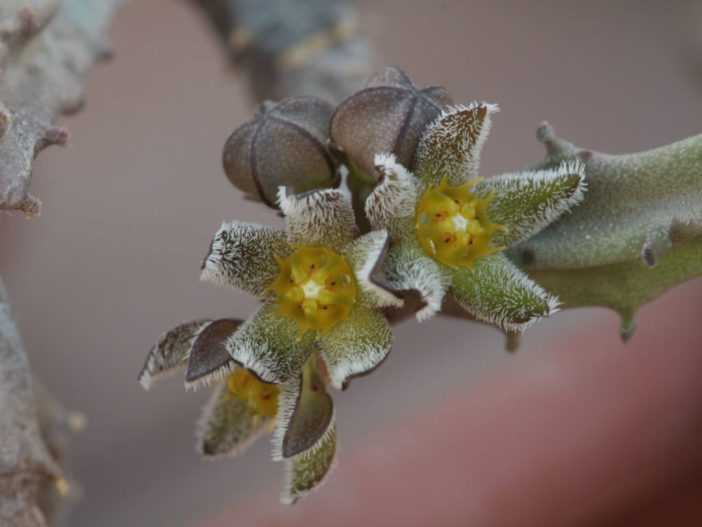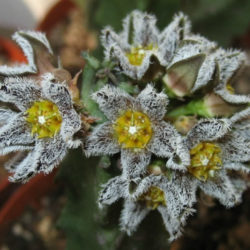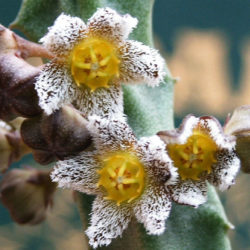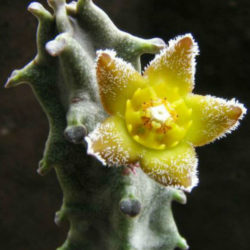Scientific Name
Caralluma burchardii N.E.Br.
Synonyms
Caralluma burchardii subsp. burchardii, Apteranthes burchardii
Scientific Classification
Family: Apocynaceae
Subfamily: Asclepiadoideae
Tribe: Ceropegieae
Subtribe: Stapeliinae
Genus: Caralluma
Description
Caralluma burchardii is a shrubby succulent with xerophytic features and a cactus-like appearance. It has strong erect stems with slender subterranean runners, forming heaps up to 20 inches (50 cm) tall and up to 24 inches (60 cm) in diameter. Flowers are green to yellow, densely covered with white hairs in the middle, and violet to maroon in the shape of the star.

Hardiness
USDA hardiness zone 10a to 11b: from 30 °F (−1.1 °C) to 50 °F (+10 °C).
How to Grow and Care
Stapeliads are relatively easy to grow. They should be treated as an outdoor plant as they will easily rot indoors and cannot flower without exposure to outdoor temperature fluctuations. They should be grown under cover so that watering can be controlled. They require a reasonable amount of sunlight to promote flowering and maintain a well-shaped plant. Very shady positions will produce very poor flowering. Stapeliads come from climates where they survive extremely high temperatures in the summer months, so most growth is in spring and fall, with flowering in fall when the weather starts to cool down.
The easiest and best way to propagate Stapeliads is from stem cuttings which can be taken virtually throughout the year. Seed is also a method of propagation. They all need extra good drainage. Stapeliads are shallow-rooted, and a collection of them can be planted up nicely in a wide, shallow bowl. When planting, it is a good idea to allow the roots to be buried in soil and then put pure gravel or sand around the base of the plant to prevent rot.
See more at How to Grow and Care for Stapeliads.
Origin
Caralluma burchardii is native to the eastern Canary Islands archipelago and adjacent Morocco.
Links
- Back to genus Caralluma
- Succupedia: Browse succulents by Scientific Name, Common Name, Genus, Family, USDA Hardiness Zone, Origin, or cacti by Genus


